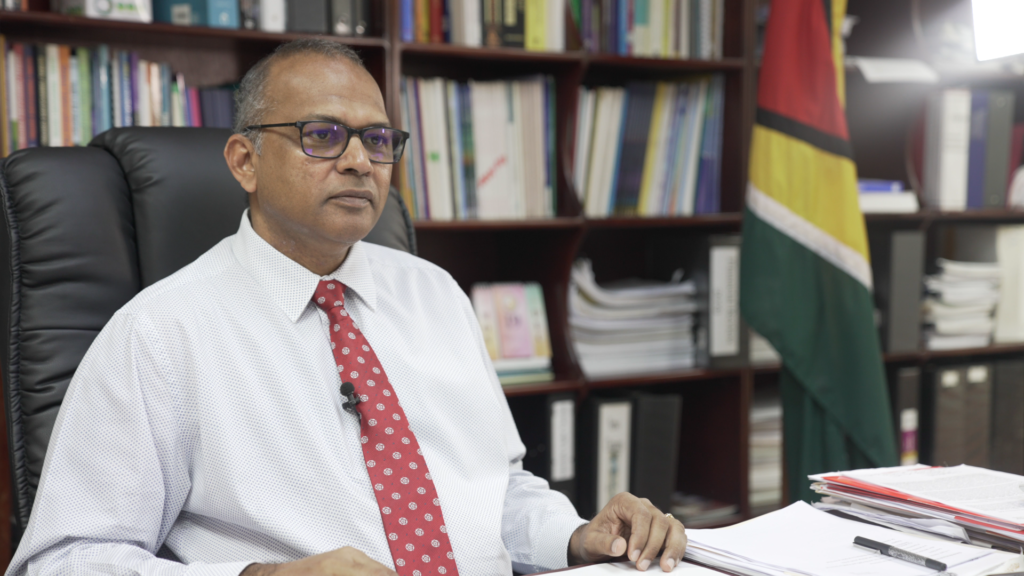With 17 pregnant women dying in 2022, Guyana taking steps to improve maternal care
By Vishani Ragobeer
For years, health authorities in Guyana have been trying to prevent women from dying during their pregnancies and while giving birth. Though the number of maternal deaths has been declining, the country’s Chief Medical Officer Dr. Narine Singh revealed that a total of 17 maternal deaths were recorded last year.
The first death was recorded at the Georgetown Public Hospital, Guyana’s main referral hospital located in the capital city. It was a 25-year-old woman who died on January 11, 2022.
Because of patient confidentiality in the healthcare system, we don’t know who many of those women are. If press releases are issued by a local health authority, such as the Georgetown Public Hospital Corporation (GPHC), only the woman’s age and date of death would be revealed.
Such press releases were not issued for all 17 deaths. The News Room, however, managed to obtain some information on the women from a reliable source.

Beyond this information, some concerned family members came forward and spoke about the loved ones they lost, even questioning if enough was done to prevent their deaths.
That was the case of 16-year-old Dana Pestano, who died on May 27 while six months pregnant. Pestano was the fifth and youngest maternal death recorded in 2022.

The day before she died, the teenager complained of shortness of breath and pain in her belly and back. As such, she was taken to the West Demerara Regional Hospital, in Region Three (Essequibo Islands-West Demerara).
Her mother, Diana Pestano, during an interview with the News Room in July 2022, said the teenager was discharged even though nurses were unable to locate her baby’s heartbeat.
The next day (on May 27), Dana’s condition worsened and her mother rushed her back to the hospital. This time, Diana claimed that her daughter was not given the necessary and adequate care; she believes this is what led to her death.
“When she holla, then is when all the doctors them run around and then they start hustling fuh do this and do that.
“But then it was already too late (because) my daughter de done die,” Pestano told the News Room.
Dana’s condition further deteriorated and she was rushed to the Georgetown Public Hospital where she and her baby died while receiving treatment later that day.
The results of an autopsy were inconclusive but based on information provided to the News Room, Pestano’s death was classified as an indirect death.
DIRECT AND INDIRECT DEATHS
For context, maternal deaths are either classified as direct and indirect deaths.
In simple terms, Dr. Singh explained that indirect deaths occur when the person experiences some challenge unrelated to their pregnancy, such as a COVID-19 diagnosis, another health complication or an unfortunate accident.

Following further tests conducted overseas, the elder Pestano was later told that her daughter died due to complications associated with her pregnancy at a young age.
And at least nine of the 17 women who died were classified as indirect deaths.
The remaining eight were, however, classified as direct deaths. This means that it was caused by some factor relating to the woman’s pregnancy.
“The ones that are really trending are the direct maternal deaths because those are because of things that could be prevented,” Dr. Singh told the News Room recently.
There are three broad reasons for direct deaths: a delay in seeking care; a delay in reaching safe medical facilities; and, a delay in receiving care at the facilities.
In Guyana, Dr. Singh said there are challenges in all three delay areas.

In the first area, he said some women, particularly those in hinterland regions with deep, cultural beliefs, may opt for more traditional, home deliveries instead of delivering at a medical facility. One of the 17 maternal deaths last year was associated with a home delivery.
That occurrence leads to the second area of delay. Dr. Singh pointed out that some deliveries may become complicated resulting in the need for women to seek emergency medical attention. If that happens in a hinterland region, difficult terrain and long distances between communities and health facilities may challenge ready medical attention.
The last area, a delay in receiving appropriate care at a health facility, points to shortcomings on part of medical professionals or the facility’s patient management system.
“We had two cases (last year) where we thought the patients were in hospital… and how the patients were managed could have prevented (their death),” Dr. Singh disclosed.
He did not offer additional details on these deaths because both cases are currently under investigation.
He, however, added, “The idea of maternal death is not really to penalise someone. It is to identify where we have the weaknesses and put corrective measures in place.”
FIXING THE ISSUES
Whether directly or indirectly caused, maternal deaths in Guyana cause much outrage. That much is evident from social media comments, for example. And maternal deaths, when reported, seem to generate questions about the quality of maternal care provided in Guyana.

So, despite gains made in the years gone by, health authorities are keen on improving maternal care.
In fact, Health Minister Dr. Frank Anthony said a Canadian team from McMasters University will travel to Guyana this year in search of potential gaps and shortcomings in the maternal care offered. Their work will be aided by another team from the United Kingdom (UK).
“The ultimate goal of all of this is to prevent maternal deaths.
“We know that we have an issue but we are working to make sure that we reduce the incidences of maternal deaths. We have to keep working on this,” Dr. Anthony said during an interview with the News Room in December.

Importantly too, huge focus is being directed towards ensuring that more women can access antenatal care. With much-needed check-ups during pregnancy, the Chief Medical Officer, an Obstetric Gynecologist himself, believes potentially fatal conditions can be readily identified and managed.
According to him, women should have four antenatal visits during their pregnancy and they should do an ultrasound at least once.
Constructing more operating theatres in the regions is another effort authorities believe will help improve maternal care- particularly in offering women much safer Caesarean deliveries.
A new women and children’s hospital is also being constructed and this has been touted as a facility that will provide key, specialised services.
With these investments, Dr. Singh posited that maternal care is a local priority. And he believes the number of deaths can be reduced further. Currently, he said the country’s maternal mortality rate is about 112 deaths per 100,000 live births.
Based on data from the World Bank, in 2000, Guyana recorded 231 maternal deaths per 100,000 live births. By 2010, the number dropped to 179 deaths per 100,000 live births.
The latest official figures from the World Bank are for 2017. And at the end of that year, 169 maternal deaths per 100,000 live births were recorded.
If the trend continues, because of a greater focus on improving maternal care, the Chief Medical Officer believes that Guyana’s overall health system will improve.
“Maternal mortality is a good indicator of your health system. It’s a litmus test of how functional your health system is.
“If you see maternal health is improving, then your health system is improving,” Dr. Singh said.








This is a very sad state of affairs. I do hope that the situation would be minimised as it has to do with life which is so important to us all. We cannot afford to have so many mortalities.